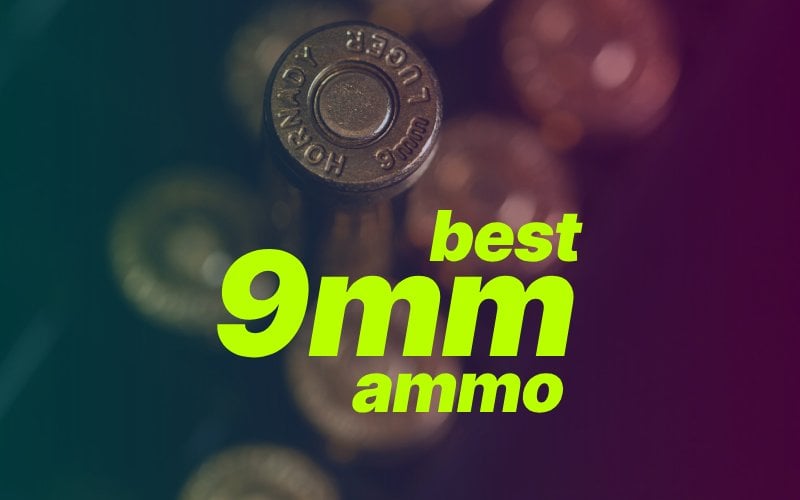
The reign of 9mm ammo seems to be never-ending, but I won’t be the one to complain. The round has been crowned for a good reason – it’s hard to find ammo more versatile than this one. There is a widest choice of both firearms and ammunition bearing these three symbols in their titles, and that only adds to the appeal. But too many often become too confusing, and, at this point, the market is replete with goods. Today, I will cover the best 9mm ammo option for you to use in a variety of scenarios.
Just as a note, I’ve tested all the ammo covered with different pistols to get more reliable results in compatibility. The models included Glock 17, Sig Sauer P365, and the Smith & Wesson M&P M2.0. All are great guns technically, some I like more than the rest, but three should be quite enough to judge the rounds objectively. There will be some theory in each section to explain the peculiarities of rounds and my reasoning for choosing ammo with specific characteristics.
Table of Contents
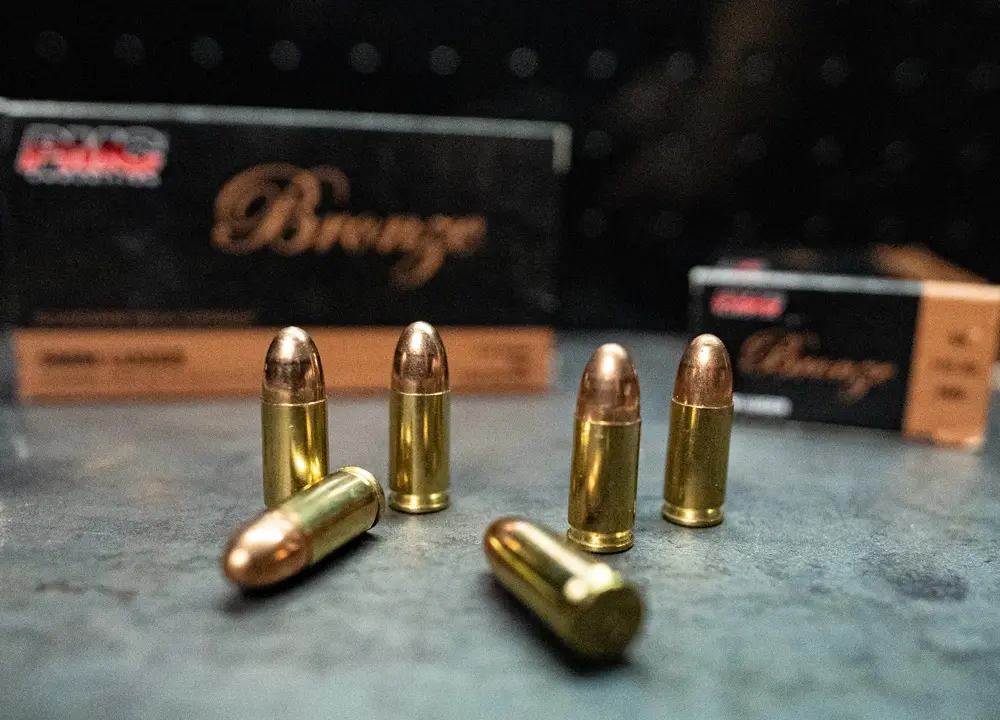
Best Training Ammo
Training is the most popular pastime for shooters. Compared to all other scenarios that involve shooting, training is what we will do in 95-99% of the cases. Honestly, anything but instances of self-defense and competitions fall into this category, but I’m starting to digress. What’s more important than semantics is the essence. And the essence is the ammo choice for your training sessions depends significantly on the purpose of your training.
You might ask: why do you need special ammo for training if you can take the one you will really use instead? The answer is simple: money. Whereas using the same ammo you’d take for target shooting is a common case, personal defense is a different story. That ammunition is expensive, and considering how many rounds you need to put through your gun before you’ll master it, the costs will add up pretty quickly. That’s why it’s better to use ammo that has similar qualities but is not as expensive as the one for self-defense.
Still, there is one thing that will unite the training ammunition I’ll cover today: it’s all Full Metal Jacket. That is the most common type of ammo with a hardened exterior jacket, highly resistant to deforming. Great for target and competition shooting, as well as all sorts of training.
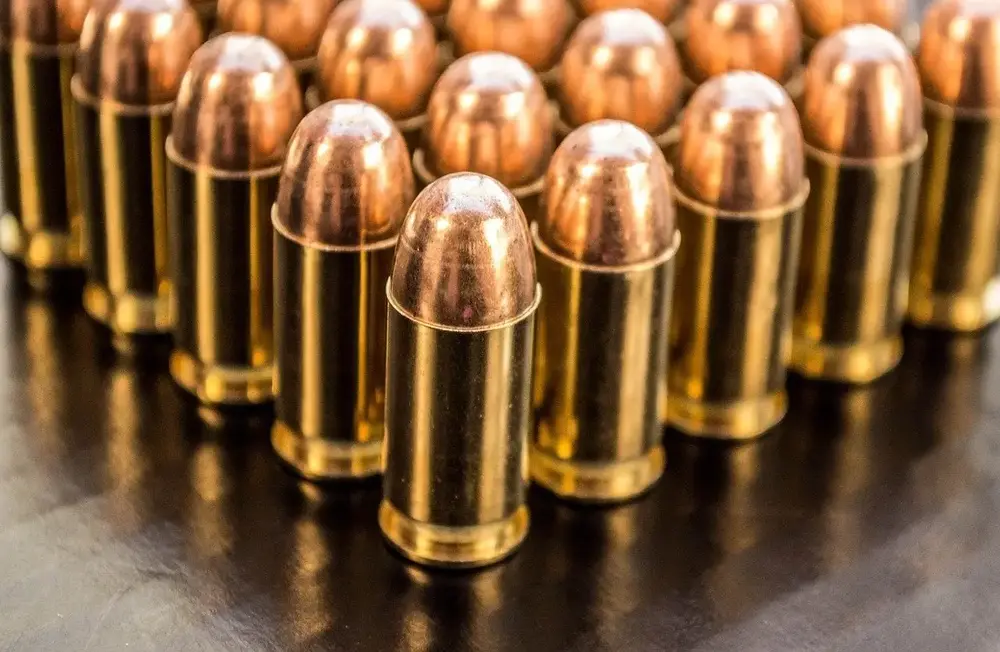
Self-Defense Training
As I’ve already mentioned, things are a bit complex with self-defense training ammo choice. In this scenario, you want something that mirrors the performance of self-defense rounds but doesn’t break the bank. So, the first thing you might want to do is dump JHP for FMJ. The latter is much more affordable.
Of course, just any FMJ won’t do. Look for a cartridge with a bullet weight of around 147gr and similar velocities to self-defense rounds. FMJ ammunition with these properties offers a realistic feel of what you might experience with actual self-defense ammo, most importantly, the recoil. You’ll get used to dealing with the kickback and won’t be taken aback when switching to real self-defense rounds.
So, which rounds to choose for personal defense training? I’d recommend three candidates: Federal American Eagle and Winchester USA, both in 147 Grain FMJ and Sellier & Bellot 124 Grain FMJ. Here’s a take on each of them:
Federal American Eagle 9mm 147 Grain FMJ
– Bullet Type: Full Metal Jacket (FMJ)
– Bullet Weight: 147 Grain
– Muzzle Velocity: 1000 fps
– Casing Type: Brass
The Federal American Eagle 9mm 147 Grain FMJ Ammo is indeed a superior round. Many guys on the range who shoot 9mm love it and I have no reason to stand against the crowd. The round performs excellently.
Having tested two boxes of the Federal American Eagle, I found the cycling to be flawless. It’s a case with all of their ammo, regardless of the caliber or load, so I wouldn’t say it’s anything surprising. In terms of sensations, it came pretty close to real self-defense rounds thanks to the relatively high recoil. And even though you can find rounds with muzzle velocity higher than that, the price makes this offer too good to pass. It also performed well enough to be used as a regular training round, and more versatility is always a good thing.
Winchester USA 9mm 147 Grain FMJ
– Bullet Type: Full Metal Jacket (FMJ)
– Bullet Weight: 147 Grain
– Muzzle Velocity: 990 fps
– Casing Type: Brass
I’ve tested a hundred rounds of the Winchester USA 9mm Luger 147 Grain FMJ and found nothing to complain about. The rounds cycled reliably, both feeding and ejection went smoothly, and that’s the way I want my ammo to act.
The round performed consistently well across all three platforms I tested it on. The bullet weight is on par with that of the majority of recommended self-defense rounds. Some might see the muzzle velocity being a bit lower than the median for personal protection rounds, but I’ll later cover one JHP cartridge with the same values. Overall, I’ve found the Winchester USA 9mm Luger to be dependable, high-quality ammunition that offers great value for the price.
Sellier & Bellot 9mm 124 Grain FMJ
– Bullet Type: Full Metal Jacket (FMJ)
– Bullet Weight: 124 Grain
– Muzzle Velocity: 1181 fps
– Casing Type: Brass
Now, this particular article of Sellier & Bellot ammo doesn’t quite reach the self-defense benchmark of 147-grain bullets, but it compensates for it with higher velocities. I’ve put these rounds through their paces and got to say, they didn’t disappoint.
Once again, all 100 rounds cycled pretty smoothly. But there was also another pleasant surprise. The rounds I had shot before that weren’t particularly fouling, but just to keep things fair, I cleaned pistols after every try (not too thoroughly, but still). Once I finished shooting Sellier & Bellot, the barrel was almost spotless. Which makes me believe it’s the least fouling of the three.
In short, the performance was well across the board. The recoil was less tangible, but that’s not necessarily good for self-defense training ammo. But again, not all personal protection ammo features 147-grain bullets, so it’s still pretty viable.
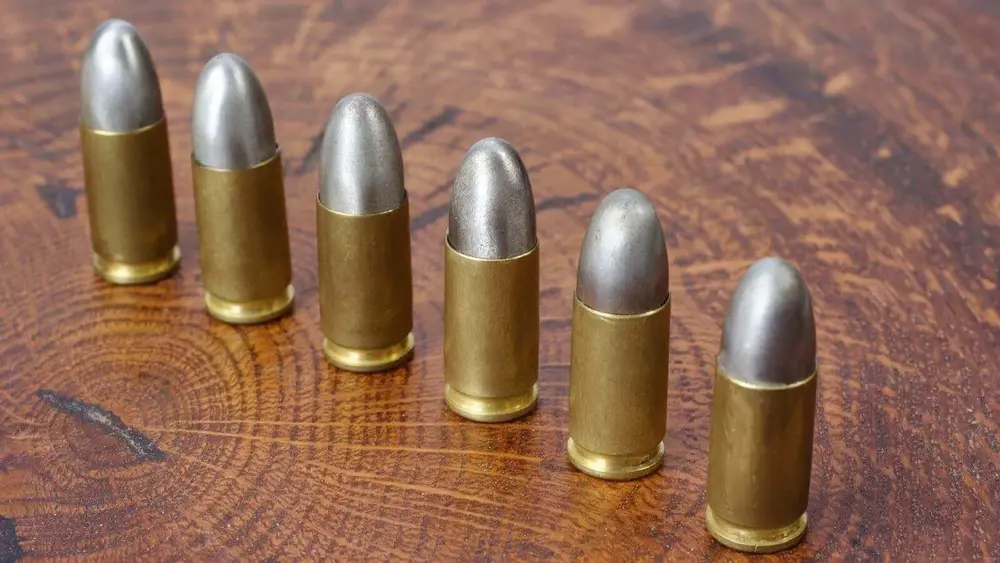
Best Ammo for Self-Defense
We write and read guides like this one as a way to improve or optimize our performance. And with ammo, it’s usually pretty harmless, however counterintuitive it might sound. We look for ammo that will help us shoot tighter groups or that will have a flatter trajectory and a dozen other things. But when it comes to self-defense, it’s no longer about “giving you better results”. It’s about preserving your life and the lives of those you hold dear. And maybe causing as little collateral damage as possible, but that would be a nice addition, not a requirement.
Unlike range or hunting ammo, self-defense rounds are engineered to inflict maximum damage upon impact. They are designed to stop an aggressor in their tracks, minimizing the chance of over-penetration that could potentially harm innocent bystanders. “A devastating impact that doesn’t spread” would be the best way to describe the function of self-defense rounds. But which ammunition is capable of such deeds?
Jacketed Hollow Points are the best candidates for the job. These rounds have a lead core wrapped in a copper jacket with a hollowed-out nose. This design allows the bullet to expand or “mushroom” on impact, providing a wider wound channel which means more damage and pain – whatever it is that can persuade the attacker out of harming you. Secondly, the expansion also ensures the bullet transfers all its energy within the target, reducing the risk of over-penetration.
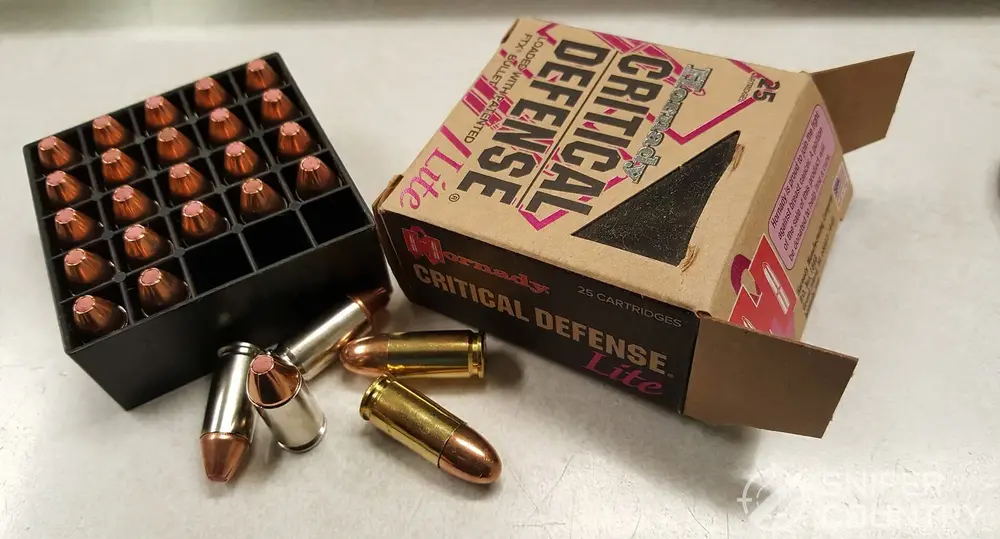
There is more variation with other aspects of the round, though. Naturally, the heavier the bullet, the more energy it can retain and transmit, so you’d want to opt for ammo with weightier bullets. But other than that, there are no more recommendations.
Now, I haven’t tested as many rounds of self-defense ammo because it’s, well, quite expensive to shoot in large quantities. I was given a single box of each and honestly, it’s pretty enough. You only need to reload your self-defense gun after either you’ve shot it or the ammo has been sitting there for too long, which are both pretty rare occasions.
So, here’s my pick of the best self-defense ammo: Federal Premium Personal Defense 147Gr, Remington High Terminal Performance 147Gr, Sellier & Bellot 115 Grain and Hornady Critical Duty +P 135Gr.
Federal Premium Personal Defense 9mm 147Gr JHP
– Bullet Type: Jacketed Hollow Point (JHP)
– Bullet Weight: 147 Grain
– Muzzle Velocity: 1000 fps
– Casing Type: Nickel-plated brass
I’ve already covered Federal rounds in this review, but they are too good to mention them only once. The Premium Personal Defense line includes ammo designed for, unsurprisingly, personal defense. The same old 147-grain bullets, muzzle velocity comparable or even equal to that of training rounds of the same maker – and here’s your perfect self-defense round.
In case you are interested, the brass casings are nickel-plated, which aids in reliable feeding and ejection and also resists corrosion. In short, the Federal Premium Personal Defense 147Gr is what I’ve put in the pistol I keep at home. And I feel pretty confident knowing this will be the round that stops the intruder.
Remington High Terminal Performance 9mm 147Gr 9mm Ammo
– Bullet Type: Jacketed Hollow Point (JHP)
– Bullet Weight: 147 Grain
– Muzzle Velocity: 990 fps
– Casing Type: Brass
Remington High Terminal Performance lives up to its name and can indeed boast high performance. Remington is generally known for producing high-quality, dependable and consistent ammo, so that came as no surprise. No issues with all three pistols I’ve tried it with, so from my experience, it is quite trustworthy. The brass casing is a nice touch too, aiding in reliable feeding and ejection while also resisting corrosion.
This is the very round I’ve been talking about when I covered Winchester USA 147 Grain FMJ. Its bullet weight at 147 grain and its muzzle velocity at 990, this round shares its specifications with the training round you’ve read about, save for the impact. They’ll make for a perfect duo of training/ self-defense rounds.
Sellier & Bellot 9mm 115 Grain Ammo
– Bullet Type: Jacketed Hollow Point (JHP)
– Bullet Weight: 115 Grains
– Muzzle Velocity: 1280 fps
– Casing Type: Brass
Sellier & Bellot 115 Grain JHP Ammo sheds light on another dimension of self-defense rounds. It sacrifices the greater bullet weight for greater velocity. Since it is a Jacketed Hollow Point, the risk of over-penetration remains negligible, so things stay balanced.
Now, there is one thing that I need to mention, it goes for 9mm 124 Grain FMJ. The primer on Sellier & Bellot 9mm rounds tends to be harder than usual. That’s because they are produced in the Czech Republic and they have different standards. That might cause failure to feed. I say might because I haven’t experienced it first-handedly, but people on the web say they have. With that being said, no ammo is immune to occasional failures – you can’t prevent them all. The best you can do is opt for ammo that has the lowest chance of malfunctioning.
Hornady Critical Duty 9mm +P 135Gr FlexLock
– Bullet Type: FlexLock
– Bullet Weight: 135 Grains
– Muzzle Velocity: 1110 fps
– Casing Type: Nickel-plated brass
I felt like the list could use a bit of diversification, so here’s the round that’s not exclusively JHP. Instead, Hornady Critical Duty +P utilizes the FlexLock bullet, which features a patented Flex Tip design that eliminates clogging and aids with bullet expansion. The round showed excellent results in FBI’s ballistic gel tests, showing great penetration results – sufficient but not excessive. It is used by numerous state law enforcement agencies and such a level of recognition is hard to beat.
Importantly, this is +P ammo, meaning it’s loaded to a higher internal pressure than standard ammo. Therefore, it should only be used in firearms that are rated and designed for +P ammunition use.

Best Ammo for Target/ Competition Shooting
When we’re talking target shooting, we’re looking for lightweight and lightly recoiling bullets, as simple as that. Why, you ask? You’ll want as much control as possible, and things like recoil stand in the way of it.
What’s the benchmark round configuration? Since you need your target not destroyed but precisely pierced, opt for the rounds with a familiar Full Metal Jacket bullet. The bullet weight of around 115 is the golden mean since energy transfer is not a big priority. If you’re interested in nothing more than plinking, low-velocity rounds will do. If you want to bring down steel plates, you will need higher-velocity ammunition.
Brass remains the king of the casing options, but especially in this type of ammo. Brass cases are reloadable if you are into that kind of thing. If not, it’s still worth collecting those cases – you can sell them to people who are into reloading.
Magtech 9mm 115 Grain 9mm FMJ Ammo
– Bullet Type: Full Metal Jacket (FMJ)
– Bullet Weight: 115 Grains
– Muzzle Velocity: 1135 fps
– Casing Type: Brass
Magtech is a go-to brand when you need affordable, quality ammo in large quantities. The brass casings, a favorite among shooters, this brand offers at a price of steel ones. Combined with the fact that its performance can match that of some premium-level ammo, еру Magtech 9mm 115 Grain FMJ is a very solid choice. It’s reliable, consistent and affordable – what more could one ask for?
CCI Blazer Brass 9mm 115 Grain FMJ Ammo
– Bullet Type: Full Metal Jacket (FMJ)
– Bullet Weight: 115 Grains
– Muzzle Velocity: 1145 fps
– Casing Type: Brass
At this point, it’s hard to describe a round in a way that would not repeat what has just been said. Under normal circumstances, CCI Blazer Brass would earn the title of the most affordable ammo. But some ammo articles are now on sale so, I’ll water down the title to the “One of the Most Affordable Rounds”. It’s high-velocity, it’s 115 grains, it’s FMJ, and that’s pretty much everything you need for target shooting.
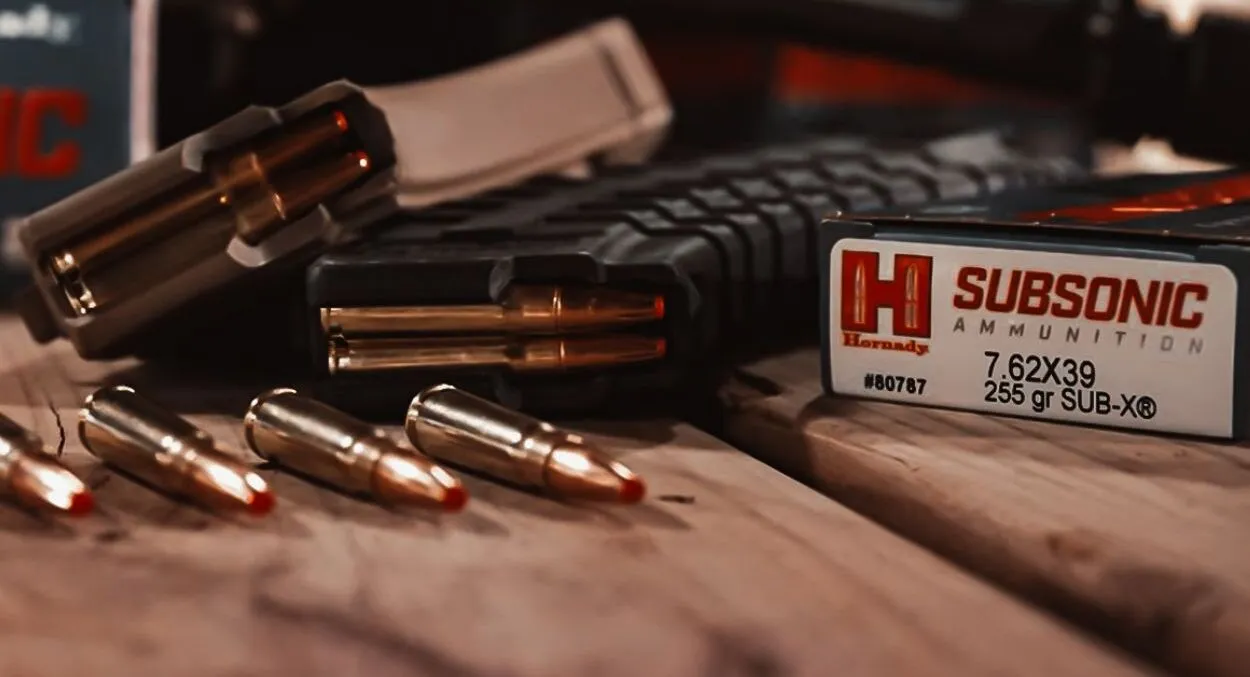
Best Subsonic Ammo
The risk of hearing damage is something that shooters have to deal with regularly. Suppressed shooting is one of the ways to address this issue while also decreasing the potential discomfort for people around. The suppressors, a.k.a. silencers, do an amazing job at reducing the noise and muzzle flash when you fire a gun. They bring the noise levels down regardless of which type of ammo you choose. However, if you want to make the noise even quieter, they need a special kind of ammo, known as subsonic ammo.
Subsonic ammo is designed specifically to maximize the efficiency of suppressed firearms. T typically uses heavy, slow-moving bullets that travel at a lower velocity. Since the bullet’s velocity remains below the speed of sound, breaking of the sound barrier doesn’t happen, nor does a distinctive sonic boom. This results in a much quieter shot compared to what shooters usually experience.
But the benefits don’t stop there. The slower velocity of these bullets also helps reduce recoil. This means you get better control over your firearm and can reach better accuracy.
It wasn’t until I began writing this article that I remembered about subsonic ammo, so I didn’t personally test the rounds I’ll write about. I bet not too many people will consider buying it anyway, since it’s usually more expensive and not that popular honestly. But this ammo comes from none other than Hornday themselves and I have no reasons to doubt their expertise so yeah, here’s the round you might want to look at for the quietest shooting possible.
Hornady 9mm Luger 147 Gr XTP Subsonic
– Bullet Type: XTP (eXtreme Terminal Performance)
– Bullet Weight: 147 Grains
– Muzzle Velocity: 975 fps
– Casing Type: Brass
The Hornady 9mm Luger 147 Gr XTP Subsonic is a performance-oriented round designed specifically for subsonic velocities. The bullet type here, XTP or eXtreme Terminal Performance, is known for its reliable controlled expansion at subsonic velocities, providing impressive stopping power. If you want to see your target destroyed without making a big bang in the process, this is a round for you.
Conclusion
So, that’s it. Boy, are there many 9mm rounds, but that only makes it more interesting to dive into this pile to find something worthy. It’s not common for a brand to only be good at producing some specific type of ammunition and having the rest of its lineup perform poorly. You can trust brands like Federal, Winchester, Remington and Hornady to deliver good quality ammo regardless of the caliber. Anyway, that’s what I had to share with you for today. See you in the next review, which will be pretty soon.
Check out our other articles on Ammo:
- Ammo Cans, Boxes & Lockers: Exploring Solutions for Safe Storage
- Ammo Performance Guide: From Calibers to Powder Loads
- Best 5.56 Ammo for Your Rifle
- Why PMC X-Tac 5.56mm 55 Grain FMJ Ammo is Ideal for Target Shooting
FAQs
What is the most popular type of 9mm ammo for training?
Full Metal Jacket (FMJ) ammunition is the most popular type of ammo for training. It is commonly used for target shooting, competition shooting, and various training scenarios.
What is the difference between FMJ and JHP ammo?
FMJ (Full Metal Jacket) ammo has a hardened exterior jacket and is highly resistant to deforming. It is commonly used for target shooting, competition shooting, and training. JHP (Jacketed Hollow Point) ammo has a lead core wrapped in a copper jacket with a hollowed-out nose. It is designed for self-defense and provides controlled expansion upon impact, minimizing the risk of over-penetration.
Which brands produce good quality 9mm ammo?
Brands such as Federal, Winchester, Remington, and Hornady have a reputation for producing good quality 9mm ammo.
What is the best 9mm ammo for self-defense training?
For self-defense training, it is suggested to use FMJ ammunition with a bullet weight of around 147gr. Federal American Eagle 9mm 147 Grain FMJ, Winchester USA 9mm 147 Grain FMJ, and Sellier & Bellot 9mm 124 Grain FMJ are good options.
What is the best 9mm ammo for self-defense?
The best 9mm ammo for self-defense is Jacketed Hollow Points (JHP) ammunition. Examples include Federal Premium Personal Defense 9mm 147Gr JHP, Remington High Terminal Performance 9mm 147Gr, Sellier & Bellot 9mm 115 Grain JHP, and Hornady Critical Duty +P 9mm 135Gr FlexLock.
What is the best 9mm ammo for target shooting?
The best 9mm ammo for target shooting is Full Metal Jacket (FMJ) ammunition with a bullet weight of around 115 grains. Magtech 9mm 115 Grain FMJ and CCI Blazer Brass 9mm 115 Grain FMJ are recommended.
What is subsonic ammo?
Subsonic ammo is designed specifically for suppressed firearms. It features heavy, slow-moving bullets that travel at a lower velocity, remaining below the speed of sound, which results in a quieter shot and reduced recoil.
What are the benefits of subsonic ammo?
Subsonic ammo provides a quieter shot than regular ammunition, making it ideal for suppressed firearms. The slower velocity of the bullets also helps reduce recoil, allowing for better control and accuracy.


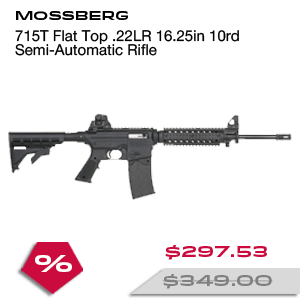
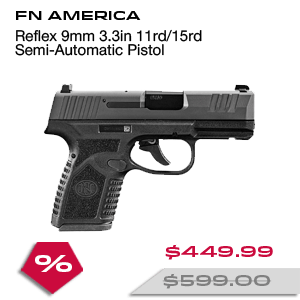
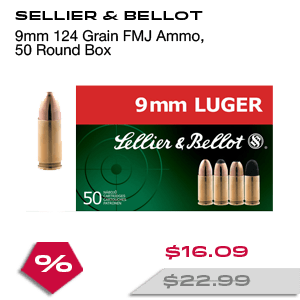

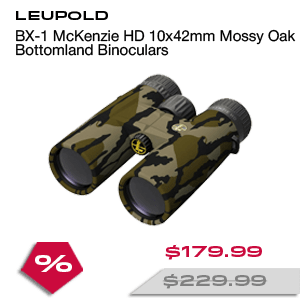
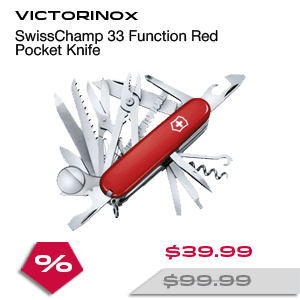




Comments (2)
Michael R Fallonsays:
October 1, 2024 at 9:02 amWinchester Ranger T 127gr hollowpoints +P+ is far superior as a self defense round, than any 9mm bullet listed on this article
Donsays:
April 19, 2025 at 3:20 pmHowever, be sure your pistol is rated for +P ammo variants.